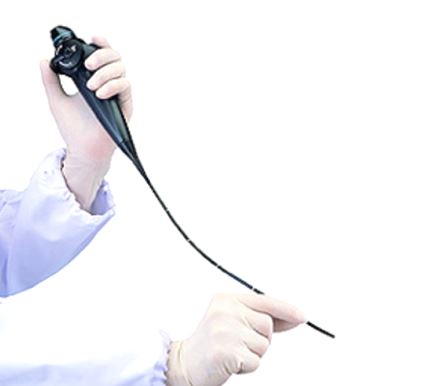Fibroscopy
What is fibroscopy?
 The fibroscopy is an endoscopic exploration used mainly in Otorhinolaryngology. A flexible fiber optic instrument connected to a cold light source, camera and monitor is used to allow direct exploration of body cavities.
The fibroscopy is an endoscopic exploration used mainly in Otorhinolaryngology. A flexible fiber optic instrument connected to a cold light source, camera and monitor is used to allow direct exploration of body cavities.
What is?
Fibroscopy consists of introducing a camera equipped with a light source into various cavities that must be explored, particularly at the level of the respiratory system (nose and mucous membranes, and throat). Thanks to the fibroscope connected to a camera, the specialist will be able to illuminate, explore and visualize the interior of the nose, pharynx and larynx, in order to establish a more precise diagnosis.
Why is this done?
In ENT, fibroscopy is used to explore the nose, nasopharynx, nasopharynx, hypopharynx and larynx. This allows for accurate diagnoses. Depending on the area to be explored, the technique receives a specific name. Thus, the nasal examination with fibroscopy is called nasofibroscopy, the examination of the larynx fibrolaryngoscopy and the examination of the entire upper respiratory tract is called nasofibrolaryngoscopy.
Specifically, it is used in patients with throat, nose or ear problems. Fibroscopy is frequently performed for the diagnosis of: sinusitis, stuffy nose, sleep apnea, tumors, nasal polyposis, deviation of the nasal septum, dysphonia, nodules, polyps, cysts or tumors of the vocal cords and gastroesophageal reflux disease.
Other less common applications are the exploration of the glottis and trachea region, as well as the main bronchi in patients with a tracheostomy tube.
Preparation for fibroscopy
In principle, no special preparation is necessary to undergo a fibroscopy. If the patient has a particular gag reflex, the specialist will apply a small topical anesthetic in the form of a spray (which is not normally necessary).
What does it do during the exam?
Fibroscopy causes a little discomfort because the fiber produces a slight friction on the nasal and/or pharyngeal mucosa. In most cases, it is tolerated and can be performed without anesthesia. It also does not cause a feeling of suffocation and generally does not cause nausea. However, if the area is more sensitive or the patient has a strong gag reflex, anesthesia in the form of a spray may be necessary.
Meaning of abnormal results
Due to fibroscopy, dysfunctions or pathologies of the respiratory tract can be diagnosed. The specialist who will perform the test will be the one who, according to the results, will consider the best treatment option. However, being a very precise test allows to visualize in a very precise way any problem of the throat, nose, larynx or pharynx.